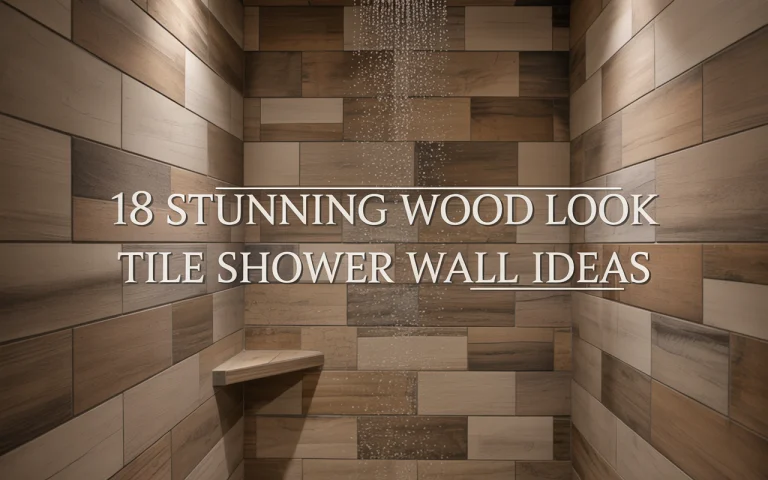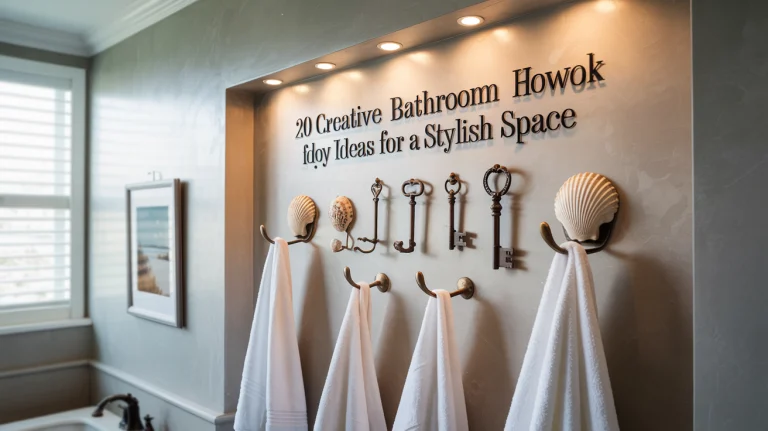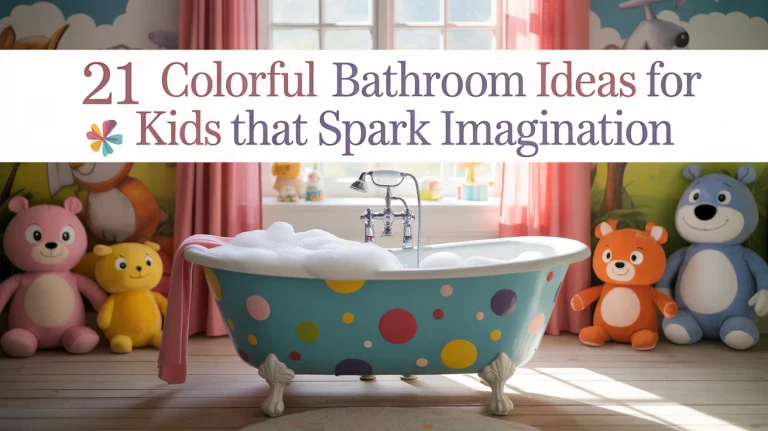11 Rustic Kitchen Design Ideas That Will Make Your Space Feel Like Home
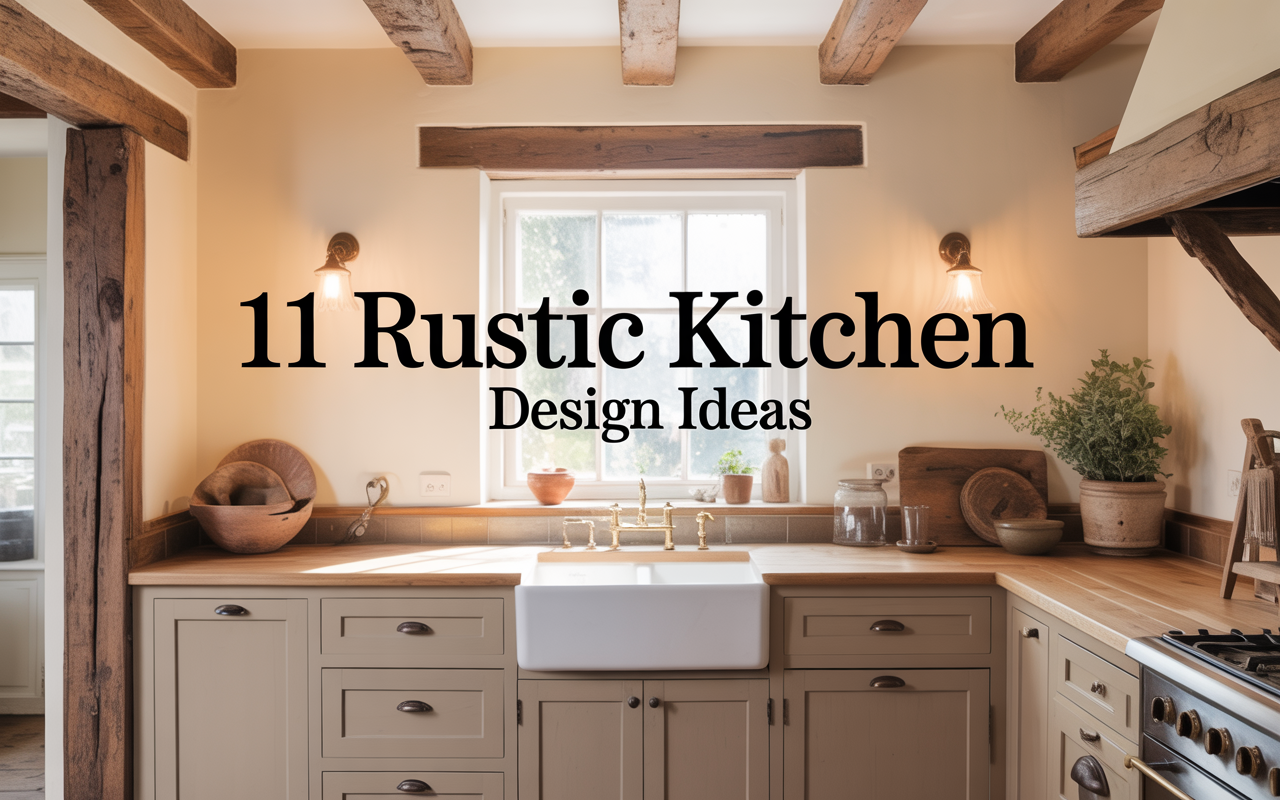
When you imagine a rustic kitchen, what feelings or images come to mind? Maybe it’s the scent of fresh bread baking in a warm oven, sunlight spilling through a window onto a worn wooden table, or the quiet comfort of simple pottery arranged on open shelves.
Rustic kitchens aren’t just about style—they’re about creating a welcoming space where warmth, history, and nature blend together seamlessly. Whether you live in a cozy country home or a modern urban apartment, bringing rustic charm into your kitchen is easier than you think.
Here, we’ll walk through 11 rustic kitchen design ideas that will help you transform your space into a haven of comfort and timeless beauty.
Reclaimed Wood: History in Every Grain
There’s something deeply meaningful about reclaimed wood in a rustic kitchen. Each plank carries a story—maybe from an old barn, a vintage ship, or a century-old home. This wood’s natural knots, cracks, and weathered textures give your kitchen character and soul you just won’t find in new lumber.
Use reclaimed wood for your countertops, shelves, or even flooring to introduce layers of warmth. The imperfect surface invites you to slow down and appreciate craftsmanship. For example, a reclaimed wood kitchen island becomes more than just a work surface—it’s a centerpiece that sparks conversation.
Don’t worry about matching everything perfectly. Mixing reclaimed wood with softer materials like woven rugs or linen curtains creates a balanced look that feels intentional yet lived-in. Plus, choosing reclaimed wood is an eco-friendly choice, keeping old materials out of the landfill and reducing the demand for new timber.
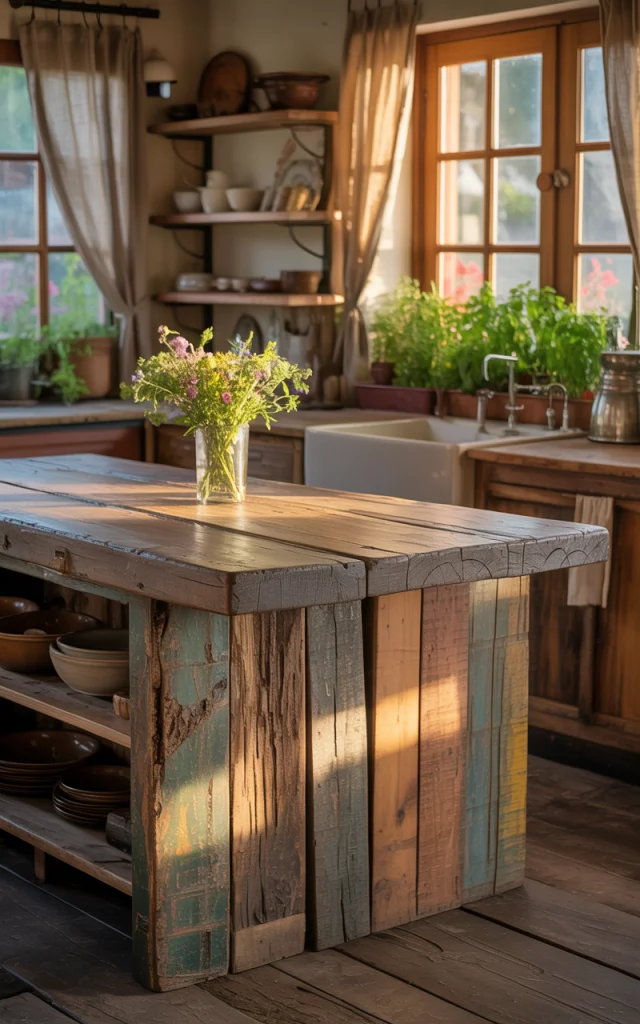
Open Shelving: Keep It Honest and Warm
Open shelving is a staple of rustic kitchens, and for good reason. Unlike closed cabinets, open shelves invite you to display your everyday essentials in a way that feels personal and approachable. Imagine stacks of handmade ceramic bowls, jars filled with dried beans and grains, or even a collection of mismatched mugs from your travels.
The key is to keep things organized but not overly polished. A little imperfection—like a slightly crooked jar or a casually placed wooden spoon—adds to the authenticity. Using raw, natural wood shelves with visible metal brackets enhances that rustic charm.
Seasonal touches are a great way to refresh your shelves throughout the year. In autumn, swap in pumpkins and cinnamon sticks. Come spring, add fresh herbs or colorful pottery. This constant evolution keeps your kitchen feeling lively and connected to nature’s rhythms.
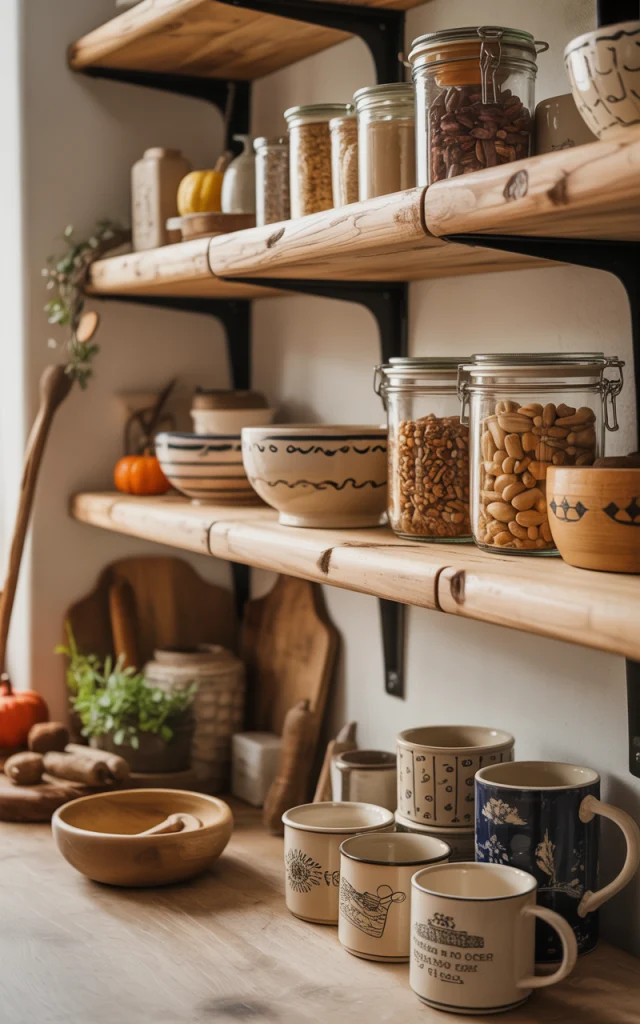
Farmhouse Sink: The Heart of the Kitchen
A farmhouse sink, also known as an apron-front sink, is the soul of many rustic kitchens. Its deep basin offers practicality—ideal for washing large pots or rinsing fresh produce straight from the garden—and its simple, sturdy design echoes farmhouse traditions.
You can choose classic white porcelain for a clean, timeless look or go for materials like hammered copper to add a warm glow and a bit of rustic elegance. Pair the sink with an antique-style faucet featuring cross handles or a bridge design to complete the vintage vibe.
Try mixing styles for an unexpected twist: pair a traditional farmhouse sink with sleek modern cabinetry to create a kitchen that feels fresh yet rooted in history.
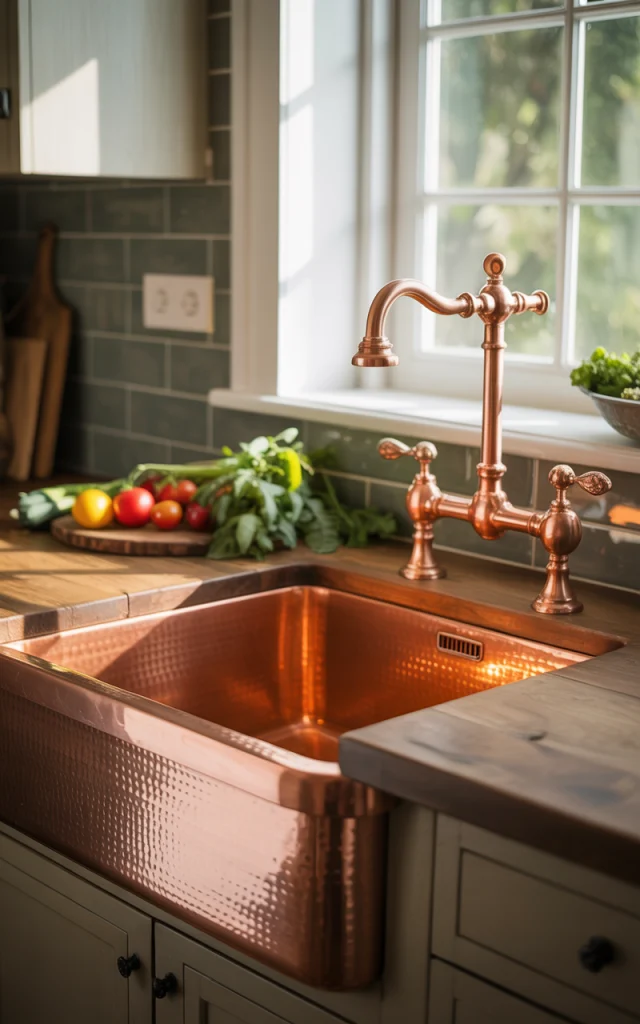
Exposed Brick or Stone Walls: Add Texture and Warmth
Natural textures like brick and stone add depth and authenticity to rustic kitchens. If you’re lucky enough to have exposed brick walls, leave them raw and untreated to let their rugged beauty shine. The warm, earthy tones of brick create an inviting backdrop that pairs beautifully with wooden elements.
If your home doesn’t have brick or stone, consider faux panels or high-quality wallpaper that mimics the look without the hassle. Even adding a small accent wall behind your stove or sink can make a big impact.
To soften the rough texture, add textiles like woven baskets or wool rugs nearby. Metallic wall decor like wrought iron hooks or framed rustic prints can also complement these natural materials and add personality.
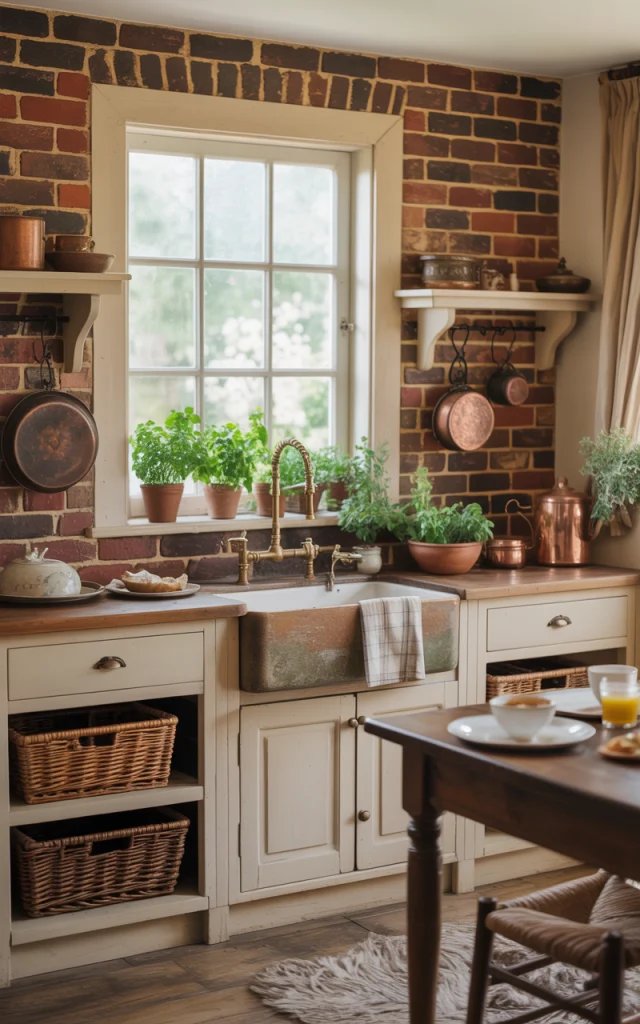
Weathered Furniture: Let It Tell a Story
Rustic design is all about celebrating imperfection and history. Incorporating weathered or vintage furniture adds warmth and a sense of lived-in comfort. Think about an old wooden kitchen table with worn edges, a set of bar stools with chipped paint, or a vintage cabinet that once belonged to your grandparents.
You don’t need to hunt for antiques exclusively. With a bit of DIY distressing using sandpaper and natural stains, new furniture can achieve that charming, aged look.
Each piece becomes more than just furniture—it’s a storyteller. It invites family and friends to linger longer, sharing meals and memories around a table that has its own history.

Earthy Color Palette: Bring Nature Inside
Rustic kitchens thrive on colors inspired by the outdoors. Picture soft mossy greens, warm rich browns, creamy whites, and dusty blues—these hues bring calmness and connection to the natural world inside your home.
For cabinets, consider muted sage or olive greens to evoke the feeling of a forest. Clay or terracotta tiles on your backsplash bring a warm, earthy touch that grounds the space. Balance deeper shades with lighter neutrals to keep your kitchen feeling airy and welcoming.
Adding organic textures like wool cushions, terracotta pots, or linen napkins brings tactile richness to the color palette, making your kitchen a multi-sensory retreat.
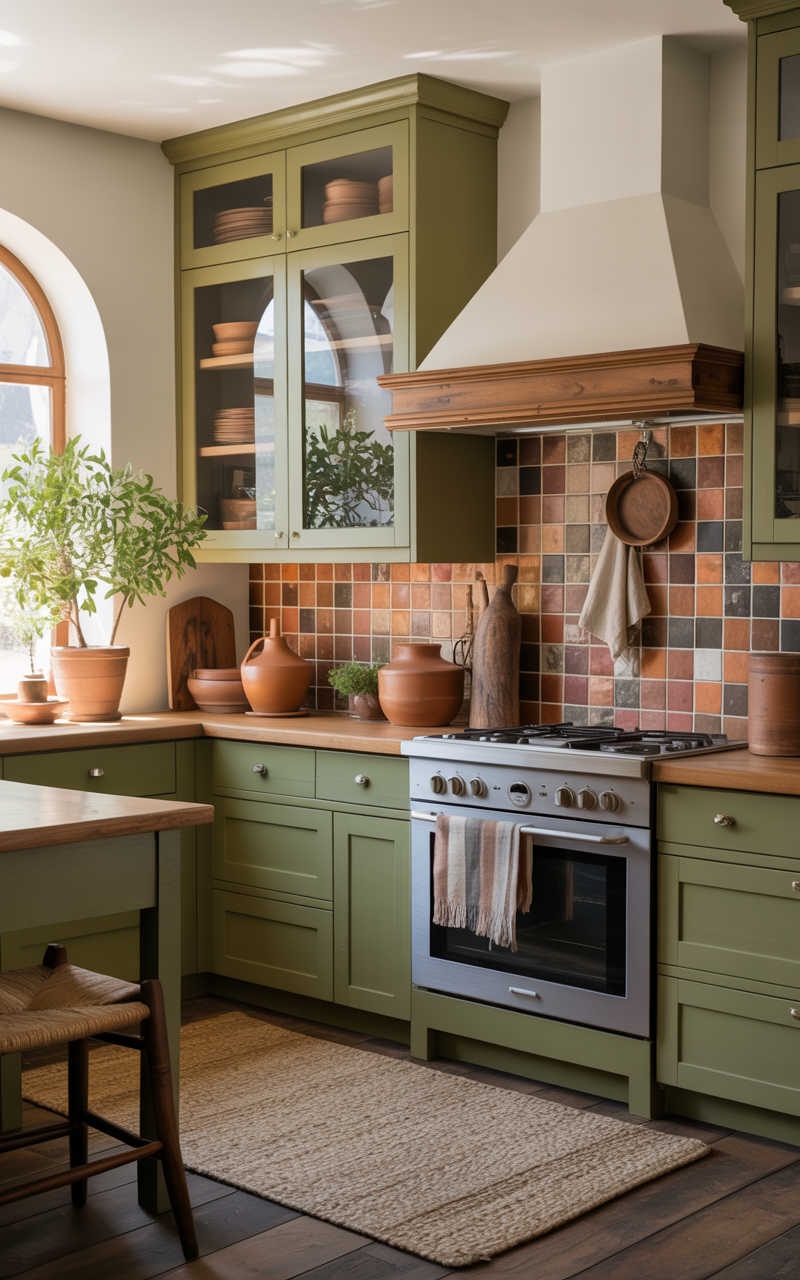
Warm and Cozy Lighting
Lighting shapes the mood of your kitchen more than anything else. For a rustic feel, look for fixtures made of aged metals, glass lanterns, or hand-forged iron. Warm-toned bulbs cast a soft, golden light that makes the kitchen feel inviting during chilly evenings.
Pendant lights over the island or dining table can serve as focal points, while under-cabinet lights illuminate workspaces without overwhelming the ambiance. Installing a dimmer switch lets you adjust the mood based on the time of day or activity.
Candles or small lanterns on the countertop or shelves add an extra layer of warmth and intimacy, perfect for cozy dinners or quiet mornings.

Natural Materials: Bring the Outdoors In
Rustic design thrives on using natural materials that bring life and texture indoors. Use wooden cutting boards as serving platters, hang dried herbs or garlic bundles for both fragrance and decoration, and display wildflowers in simple glass jars or clay vases.
Plants add fresh greenery and a sense of vibrancy to your kitchen. Whether it’s a small herb garden on the windowsill or a large leafy plant in a corner, these touches connect your kitchen to nature’s cycles.
Baskets woven from natural fibers and bowls made from stone or wood can also add subtle layers of texture that enrich the rustic feel.
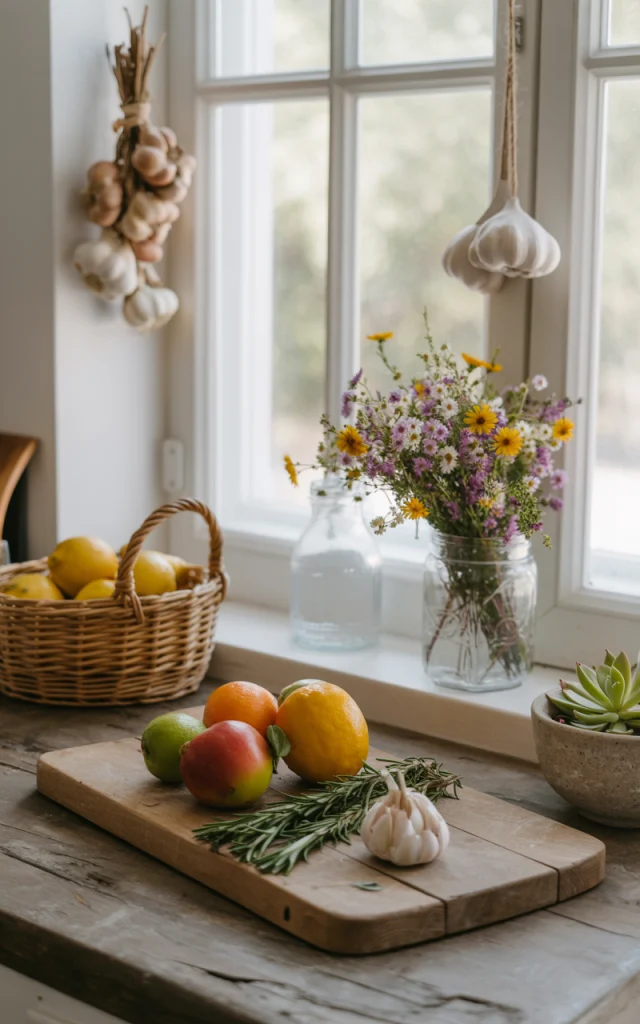
Copper and Iron Accents: Add Depth and Contrast
Metal accents are a beautiful way to add contrast to the soft, natural elements of a rustic kitchen. Copper pots hanging from a rack, iron drawer pulls with a weathered finish, or a vintage copper kettle on the stove become eye-catching details that tell a story.
Don’t shy away from mixing finishes—matte black, bronze, and aged brass can coexist beautifully in a rustic kitchen. Look for antique or handmade metalwork to add authenticity.
Old cooking tools repurposed as wall decor—think cast iron skillets or vintage ladles—add nostalgia and personality, making your kitchen feel like a warm gathering place filled with history.
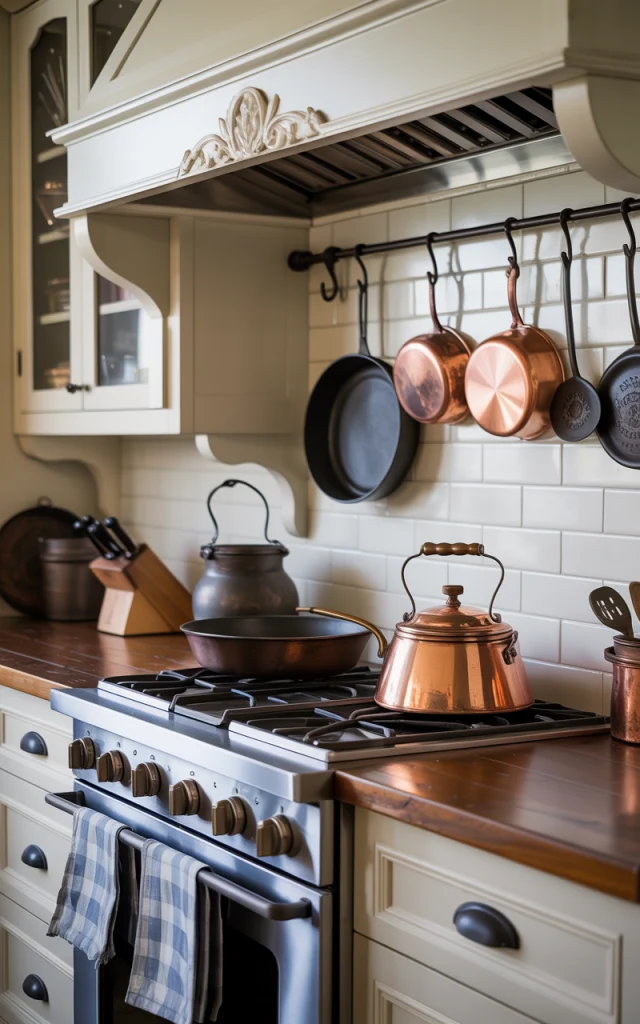
Handmade Touches: Celebrate Imperfection
Rustic kitchens are about warmth, and nothing says warmth like handmade items. Incorporate pottery made by local artisans, embroidered linens, or DIY wooden shelves crafted with love.
A chalkboard wall or small framed handwritten recipes bring a personal touch that makes your kitchen feel uniquely yours. Display family heirlooms like a grandmother’s rolling pin or a child’s drawing to create a sense of belonging.
Handmade dried flower arrangements, pinecone centerpieces, or woven trivets add character and remind you daily of the beauty in imperfection and care.
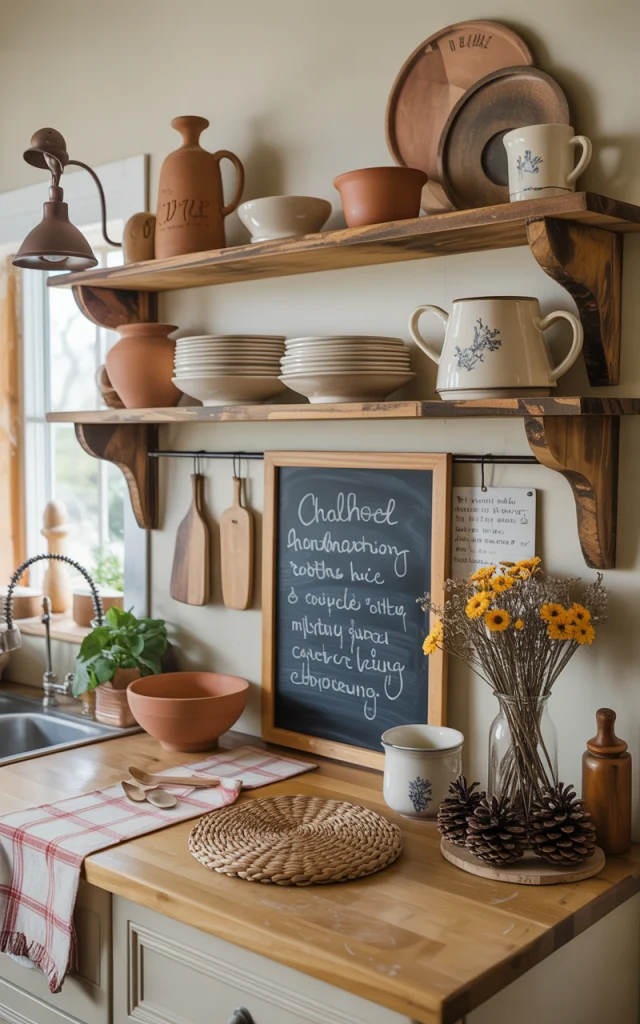
Functional Yet Nostalgic Decor
Rustic kitchens blend utility and charm. Hang cast iron pans where they’re easy to reach, display an old-fashioned teapot, or set out a vintage scale for weighing ingredients. These objects are both practical and decorative, creating a kitchen that feels authentic and lived-in.
Mason jars, enamelware, and antique baking tins can store everything from flour to utensils, mixing organization with old-world charm. These pieces add layers of history and personality without sacrificing convenience.
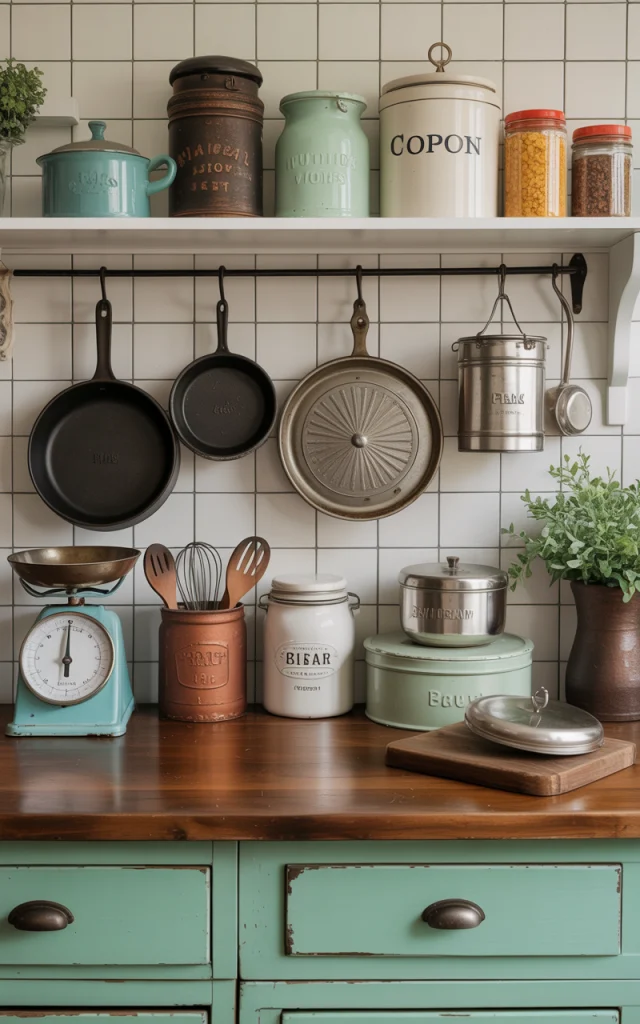
Bonus Tip: Create a Rustic Pantry Nook
If you have space, a pantry nook is a perfect way to extend rustic style while adding function. Use open crates, wooden bins, and glass jars with handwritten labels to keep ingredients visible and organized.
A vintage screen door or barn-style sliding door can add a charming touch to your pantry entrance, blending style and practicality.
Make It Yours: The Beauty of Personal Touches
The most important thing to remember is that rustic design isn’t about rigid rules—it’s about creating a space that feels warm, welcoming, and uniquely yours.
Mix old and new, experiment with textures and colors, and don’t be afraid to start small. Maybe it’s just repainting a cabinet in a soft green or adding a few open shelves with your favorite ceramics.
This is a kitchen where stories are shared, where time slows down, and where every detail—from the grain of reclaimed wood to the glow of a copper kettle—invites you to feel at home.


